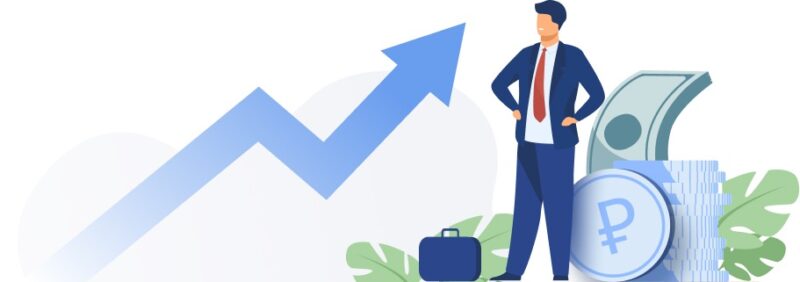Development of the economy of Uzbekistan in the 1st half of 2023
The economy of Uzbekistan in the 1st half of the year maintained high growth dynamics and remained resistant to changes in the unstable external environment.
According to the Statistics Agency, the gross domestic product (GDP) of Uzbekistan increased by 5.6% in the first 6 months of this year, which is higher than in the same period of 2022 (5.4%).
Despite the persistence of geopolitical instability, the economic situation in neighboring countries in January-June of this year was generally favorable. In Kazakhstan, the economy grew by 5%, in Kyrgyzstan by 3.9%. In China, GDP growth was 5.5%. According to the estimates of the Ministry of Economic Development of the Russian Federation, Russia’s GDP grew by 0.6% in January-May compared to the same period of the previous year.

Inflation in Uzbekistan continues to slow down and at the end of 6 months shows the lowest rates in the last 5 years. In January-June, prices increased by 3.5%, while in the same period in 2022 by 6.5%. In annual terms, inflation slowed to 9% (in June 2022 – 12.2%). Food inflation slowed from 8.9% in January-June 2022 to 4.1% over the same period this year. Similarly, the growth of prices for non-food products slowed from 5.8% to 3.1%, for paid services from 3.3% to 2.9%.
Investments in fixed assets for 6 months increased by 7.9% (in January-June 2022 – 6.6%). The main inflow came from non-centralized investments, the growth rate of which was 8.7%. Of these, investments at the expense of enterprises increased by 15.8%, funds of the population – 8.7%, loans from commercial banks and other borrowed funds – 36.5%. In addition, there is a double-digit dynamics in attracting foreign direct investment at the level of 21%.

Investments from centralized sources in the first half of the year increased by 2.4%, in particular, at the expense of budget funds by 3.6%. Foreign investments and loans guaranteed by the government increased by 6.9%.
In general, the share of centralized investments in the investment structure decreased from 13% in January-June 2022 to 12.3%, the share of non-centralized ones increased from 87% to 87.7%, respectively.
It should be noted that the share of investments directed in the manufacturing industry increased to 30.2% (28.9% in the 1st half of 2022), the mining industry to 8% (6.1%).
Industrial production in the first 6 months grew at a faster pace compared to the same period in 2022 – 5.6% versus 5.1%, respectively.
The main factors of economic growth are due to the timely adoption of urgent measures to support entrepreneurs, as a result of which the growth of the manufacturing industry amounted to 6.3% (5.9% for the first half of 2022), the mining industry by 0.2% (-0.5%).
Also, power supply grew the most dynamically among the industrial sectors by 9.9%, which, however, is lower than in January-June 2022 (an increase of 14.7%).
In addition, in the 1st half of this year, the sectors that were declining last year also grew. In particular, the mining industry experienced a slight increase of 0.2% (in January-June 2022, a decrease of 0.5%), the water supply, sewerage, waste collection and disposal sector grew by 3.6%, against a decrease of 11.6% in the first 6 months of 2022.

The dynamics in the construction sector slowed down slightly from 5.1% in January-June 2022 to 4.8% for the same period this year.
In agriculture, in particular in crop production and animal husbandry, there is an acceleration in the growth rate of output to 3.8% (in January-June 2022 – 2.7%). At the same time, the growth rates of forestry and fisheries have slowed down somewhat.
The volume of market services rendered in the first 6 months of 2023 increased by 12.3% (for the same period in 2022 – 14.5%). In terms of sectors, communication and information services grew at double-digit rates by 22.9%, financial services by 22.7%, education services by 19.5%, accommodation and food by 10.4%. In the transport sector, the volume of services increased by 8.6%. The growth rates of cargo turnover and passenger turnover have slowed down.
There is a slowdown in the growth rate of retail turnover from 9.9% in January-June 2022 to 6.9% for the same period in 2023.
Foreign trade turnover in the 1st half of the year increased by 19.4% to US$29.2 billion. Exports increased by 23% to US$12.1 billion, imports by 17% to US$17 billion.
The export growth is due to an increase in the supply of machinery and transport equipment to foreign markets by almost 60%, gold by 47%, services by 41%, food by 33%, various finished products by 25%. At the same time, exports of non-food raw materials decreased by 26%, fuel and energy resources by 20%.
In imports, an increase in supplies to Uzbekistan is noted for fuel and energy products by 73%, machinery and transport equipment by 30%, chemical products by 10%.
In general, the main trends of the 1st half of the year were strengthening macro stability and reducing the impact of negative factors on the economy, supporting positive growth dynamics of economic sectors, strengthening investment activity. Uzbekistan’s economy is expected to maintain stability and a dynamic pace of development by the end of the year.






